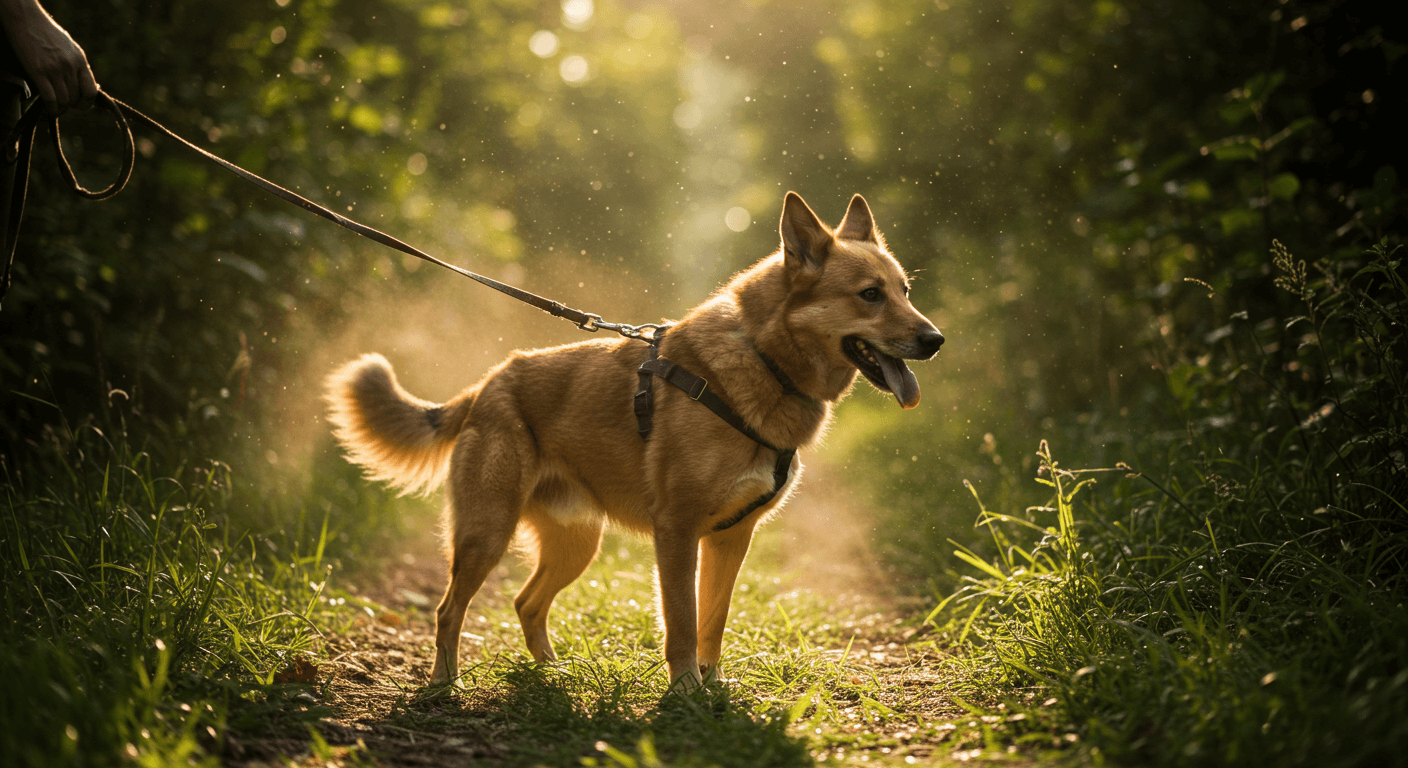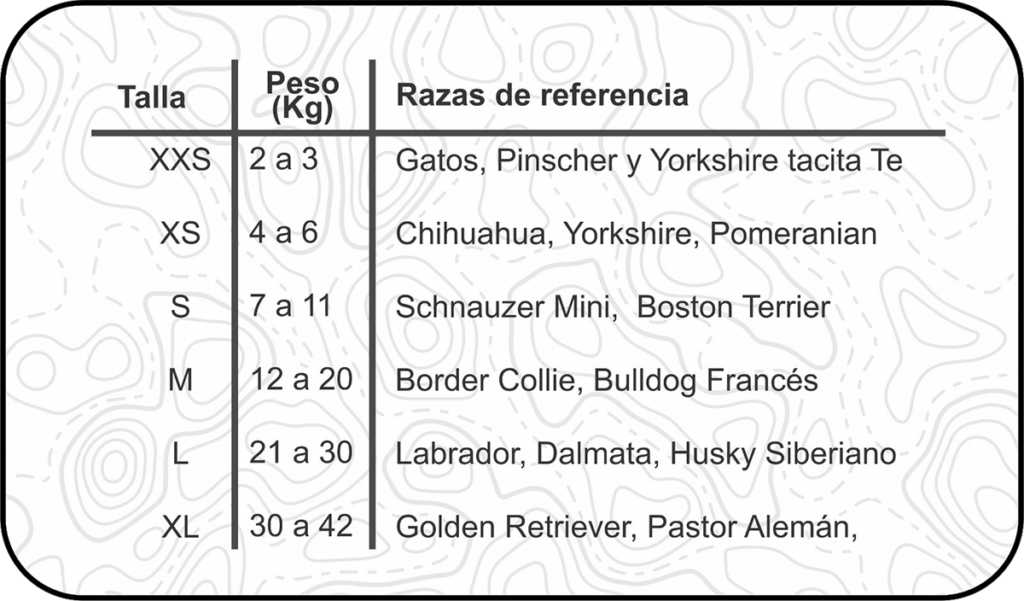
Dog Walking Leashes: Complete Guide to Choosing the Right One
Leashes are much more than simple accessories to control our dogs during walks. They are essential tools that directly influence the experience for both, ensuring safety, comfort and control. With so many options available on the market, selecting the perfect leash can be confusing. In this detailed guide, we'll explore the different types, materials and features to help you make the best decision based on your canine companion's specific needs.
Why is it important to choose the right belt?
A proper belt not only meets the legal requirements of many communities, but also:
- Provides safety in potentially hazardous environments
- Facilitates training and communication with your dog
- Prevents injuries to both the dog and owner
- Significantly improves the experience of daily walks
Types of dog leashes
Standard fixed belts
Classic fixed-length straps are the most common and versatile:
- Usual length: Between 1.2 and 1.8 meters
- Advantages: Consistent control, durability, ease of use
- Ideal forBasic training, urban areas and dogs in the learning process.
- ConsiderationsMay be limiting for exploration in open spaces.
Extendable or retractable straps
They allow greater freedom of controlled movement:
- Variable lengthGenerally between 3 and 8 meters
- AdvantagesAllow exploration while maintaining control
- Ideal forOpen areas and well-trained dogs
- ConsiderationsThey require constant attention and can cause injuries if not used correctly.
Multiposition straps
They offer versatility and adaptability to different situations:
- FeaturesMultiple rings and adjustable length
- AdvantagesCan be converted from standard leash to hands-free
- Ideal forActive owners who engage in various activities with their dogs
- ConsiderationsHigher complexity of initial use
Training straps
Designed specifically for obedience work:
- FeaturesLonger length (3-10 meters), usually flat
- Advantages: Allowing you to work remotely while maintaining control
- Ideal forCall training, field work, obedience exercises, etc.
- ConsiderationsNot recommended for standard walks in crowded areas.
Hands-free straps
Perfect for runners and activities that require freedom of movement:
- FeaturesThey adjust to the waist or cross to the body.
- AdvantagesFreeing the hands, weight distribution, greater comfort
- Ideal for: Canicross, jogging, hiking, cycling
- ConsiderationsThey require previous training and good communication with the dog.
Materials: advantages and disadvantages
Nylon
The most common material for its balance between price and performance:
- AdvantagesEconomical, available in multiple colors and designs, resistant, easy to clean.
- DisadvantagesMay cause burns if the dog pulls sharply, wears out over time.
Leather
An elegant and enduring classic:
- AdvantagesExtremely resistant, softens and adapts with use, premium look and feel.
- DisadvantagesHigher price, requires specific maintenance, may deteriorate with humidity.
Rope
Increasingly popular for their combination of strength and comfort:
- Advantagesshock absorbing, pleasant to the touch, less friction injuries
- DisadvantagesMay be difficult to clean, some are less durable.
Chain
For biting dogs or specific situations:
- AdvantagesImpossible to chew, maximum durability
- Disadvantages: Heavy, noisy, can hurt uncoated hands, not suitable for tugging
Key elements for a wise choice
Size and strength of your dog
- Small dogs (up to 10kg): Lightweight 1-1.5cm wide straps
- Medium dogs (10-25kg): 1.5-2cm wide straps with medium strength
- Large dogs (over 25kg): 2-2.5cm straps with high strength
- Shooter dogsConsider straps with shock absorbing or anti-pulling systems
Behavior during walks
- Trained and calm dogsGreater flexibility of choice
- Reactive dogs: Short, strong straps with good grip
- Scout dogsLonger or extendable straps in secure environments
- Dogs in training: Straps that allow clear communication and control
Type of activity
- Urban walksShort and handy leashes (1-1.5m)
- Excursions in natureLonger or extendable straps
- Running or jogging: Specific hands-free straps
- TrainingLong training or multi-position straps
Additional features to consider
Reflective or luminous elements
Fundamental for safety on night walks or in poor visibility:
- Built-in reflective strips
- Integrated LED lights
- Fully reflective material
Type of coupling
- Standard carabinerThe most common, functional for general use
- Safety carabinerWith additional lock for added security
- Swivel hitchPrevents tangling and twisting
Handle or grip
- Quilted: Increased comfort, especially with dogs that pull
- ErgonomicReduces fatigue on long walks
- With safety loopProvides additional support
Maintenance and care
- Inspect regularly for wear, especially at critical points.
- Wash according to specific material recommendations
- Replaces at any sign of significant deterioration
- Store in a dry place out of your dog's reach.
Frequently asked questions about belts
Is an extendable or fixed leash better?
It depends on the context. Fixed leashes offer greater control and are ideal for urban or distracting environments. Extendable leashes allow exploration in open spaces but require constant attention and are not recommended for dogs without basic training.
When should I replace my dog's leash?
You should replace the belt when you notice:
- Significant material wear
- Carabiner malfunction
- Signs of fragility at critical points
- After an incident that has put the belt under extreme tension
Can I use the same strap for different activities?
Although possible, it is ideal to have specific leashes for each type of activity. A multi-position leash can be a good versatile alternative, but certain activities such as canicross require specialized equipment.
Conclusion
The perfect leash is the one that suits your dog's specific needs and the type of activity you do together. Don't hesitate to invest in a quality leash, as it is an essential tool for safety, training and the enjoyment of your daily walks.
Remember that beyond the type of leash you choose, consistent training and positive communication with your dog are the most important factors in achieving enjoyable walks. The best leash complements this work, but does not replace it.
Have you already found the ideal leash for your four-legged companion? The perfect combination of functionality, comfort and safety is at your fingertips.







